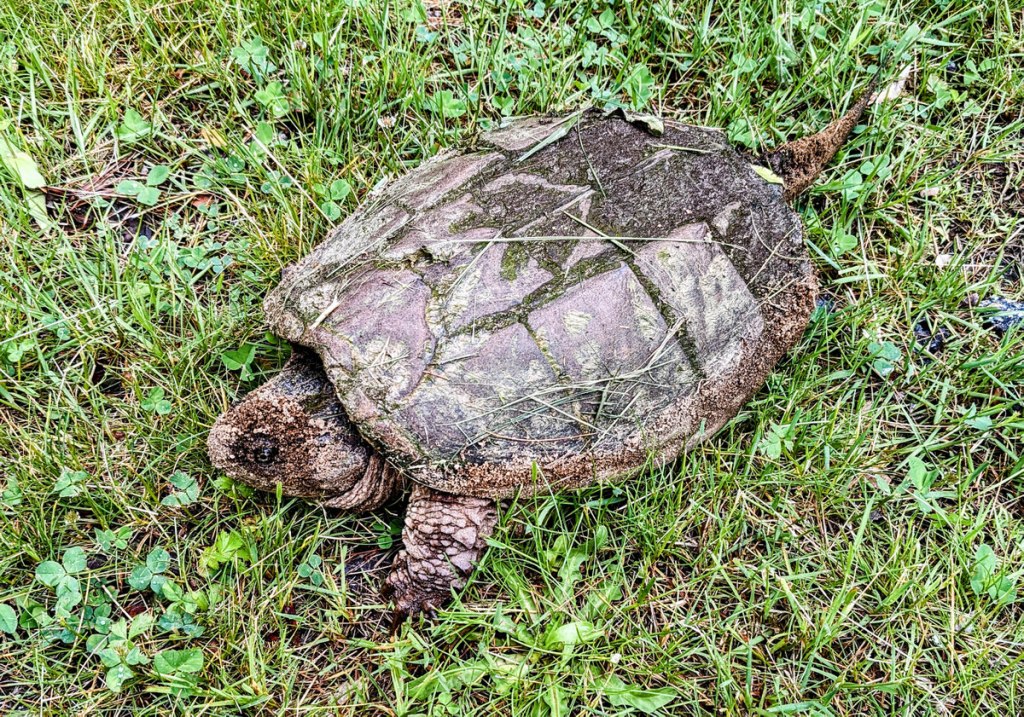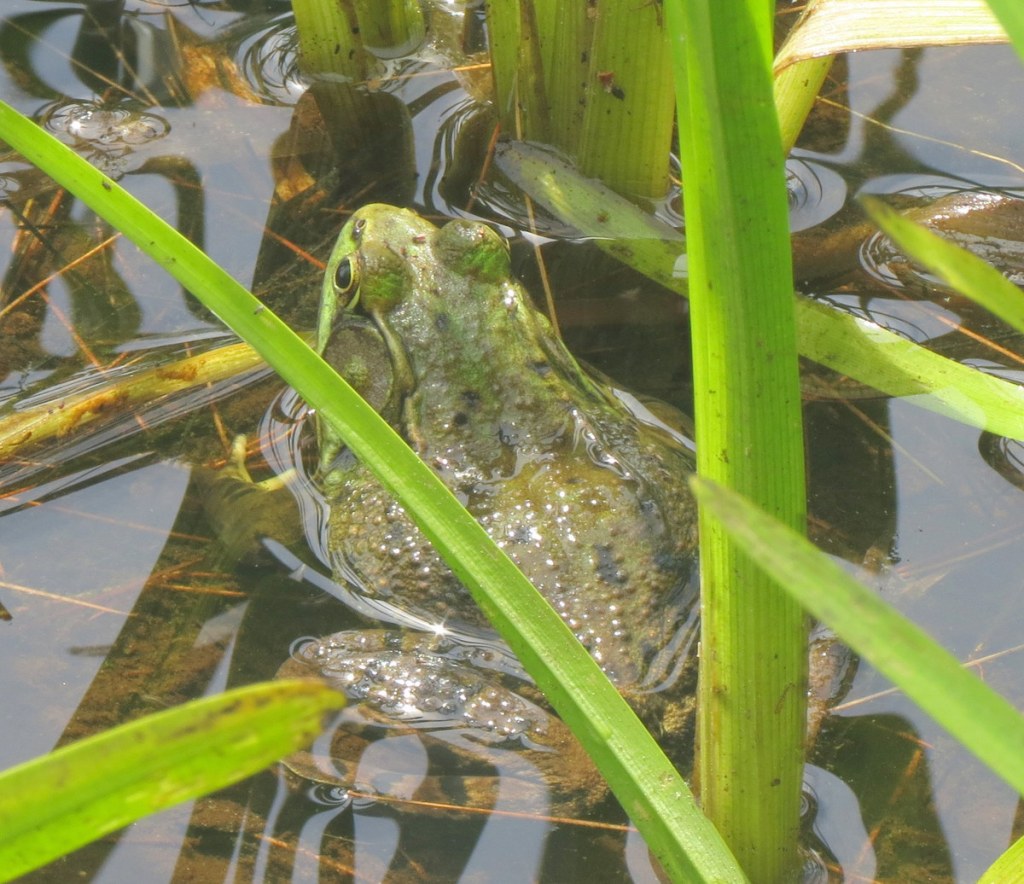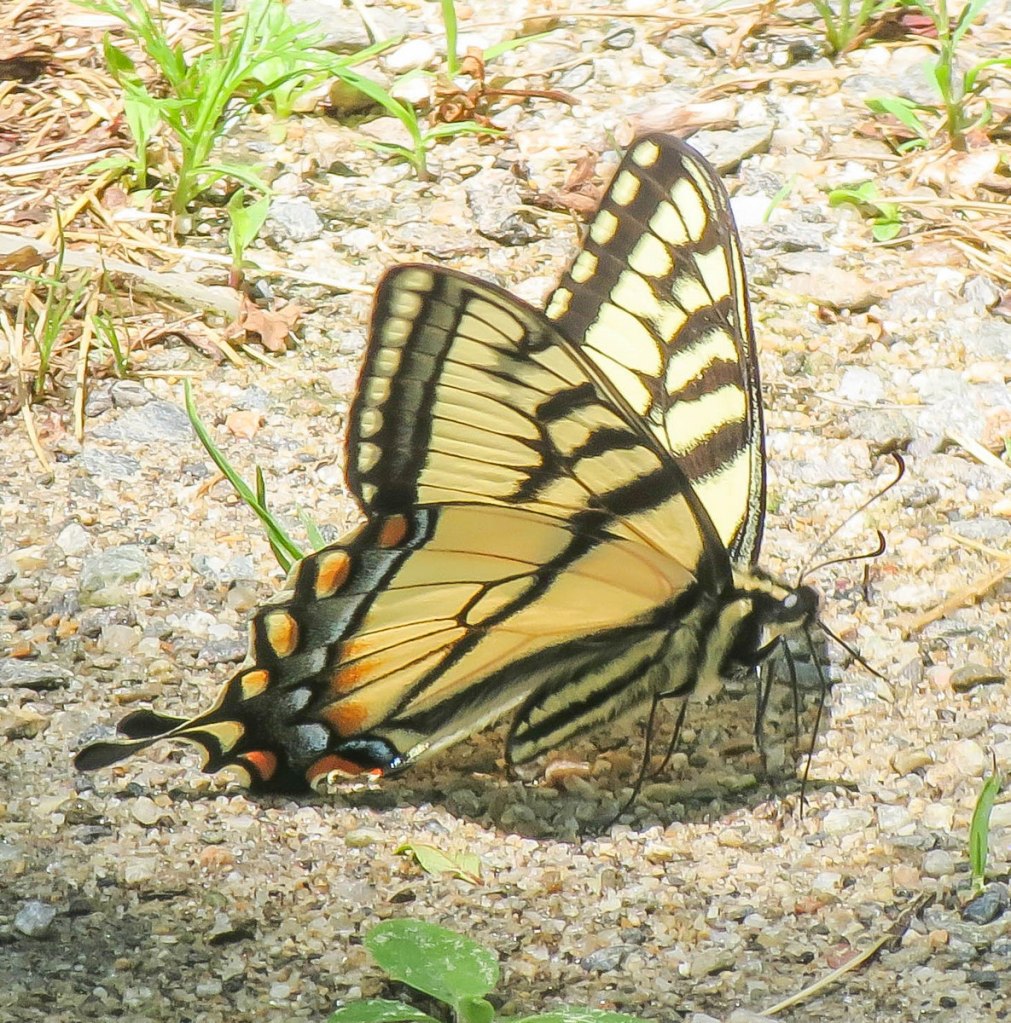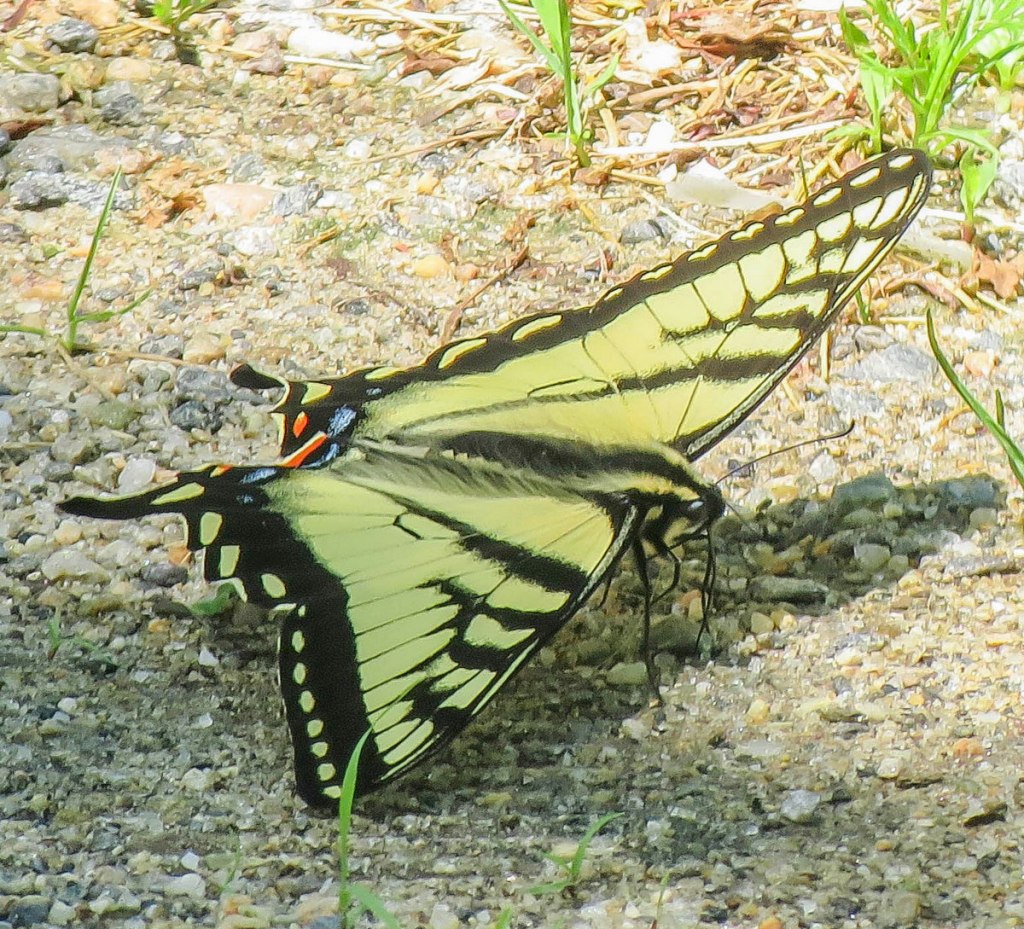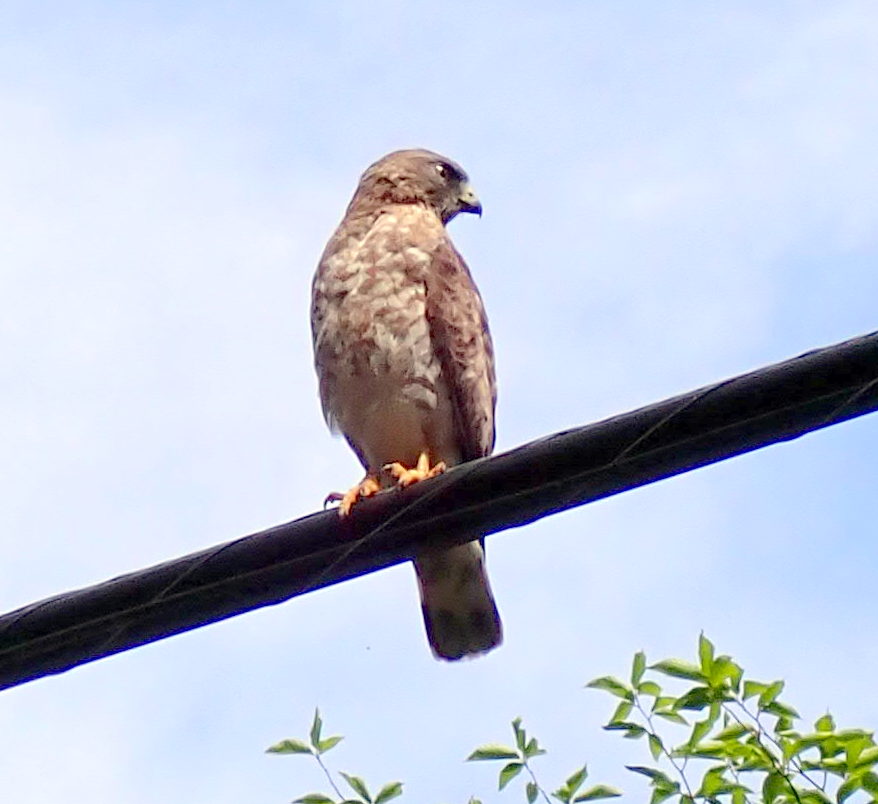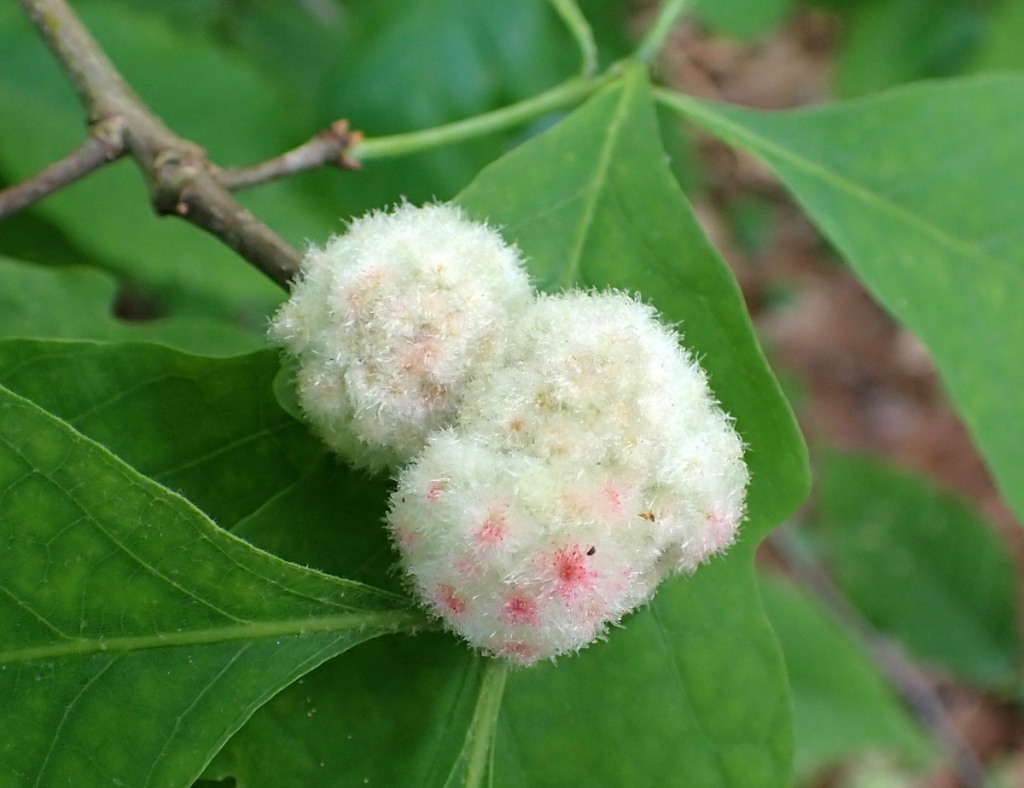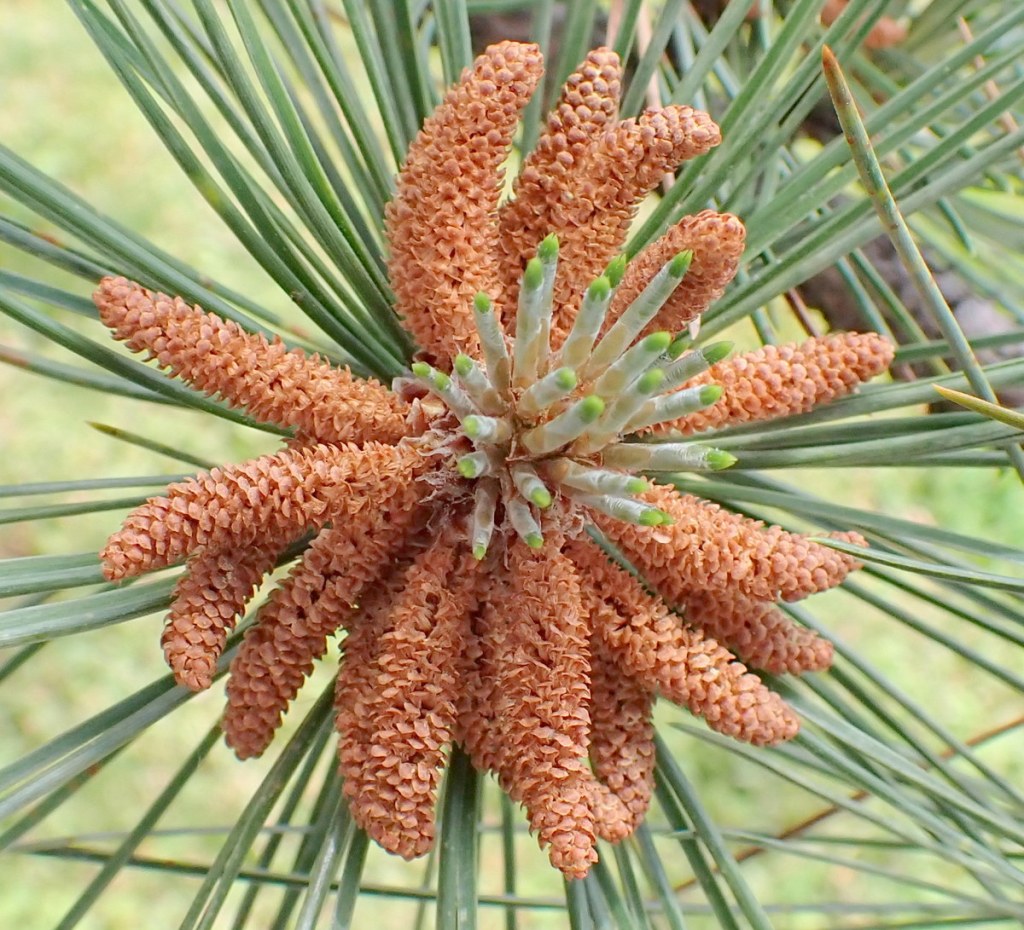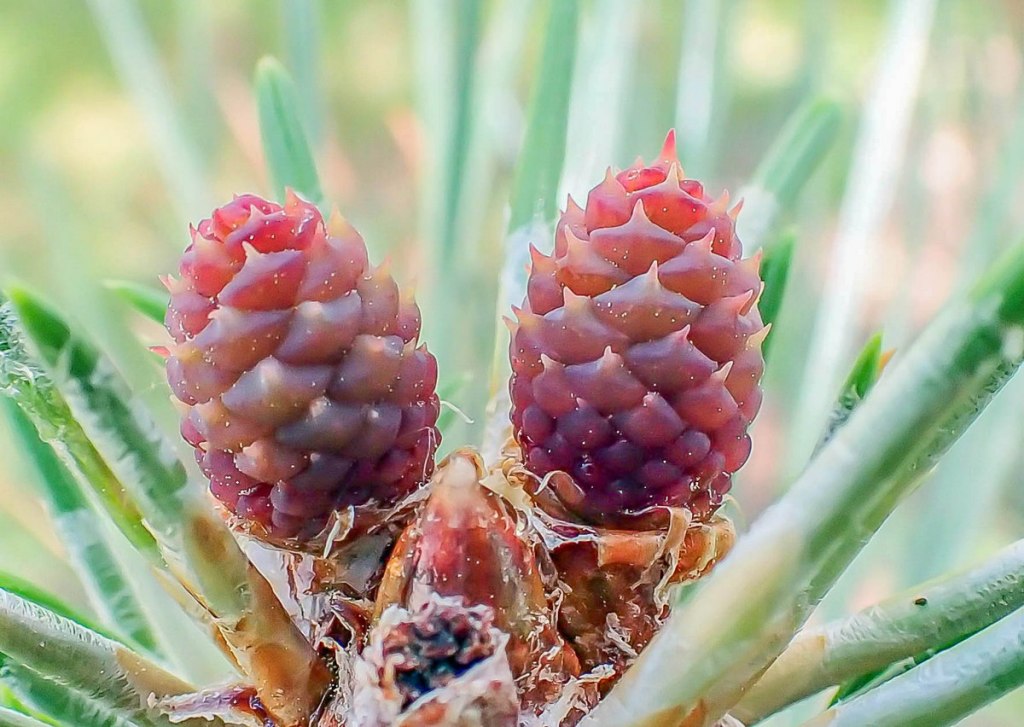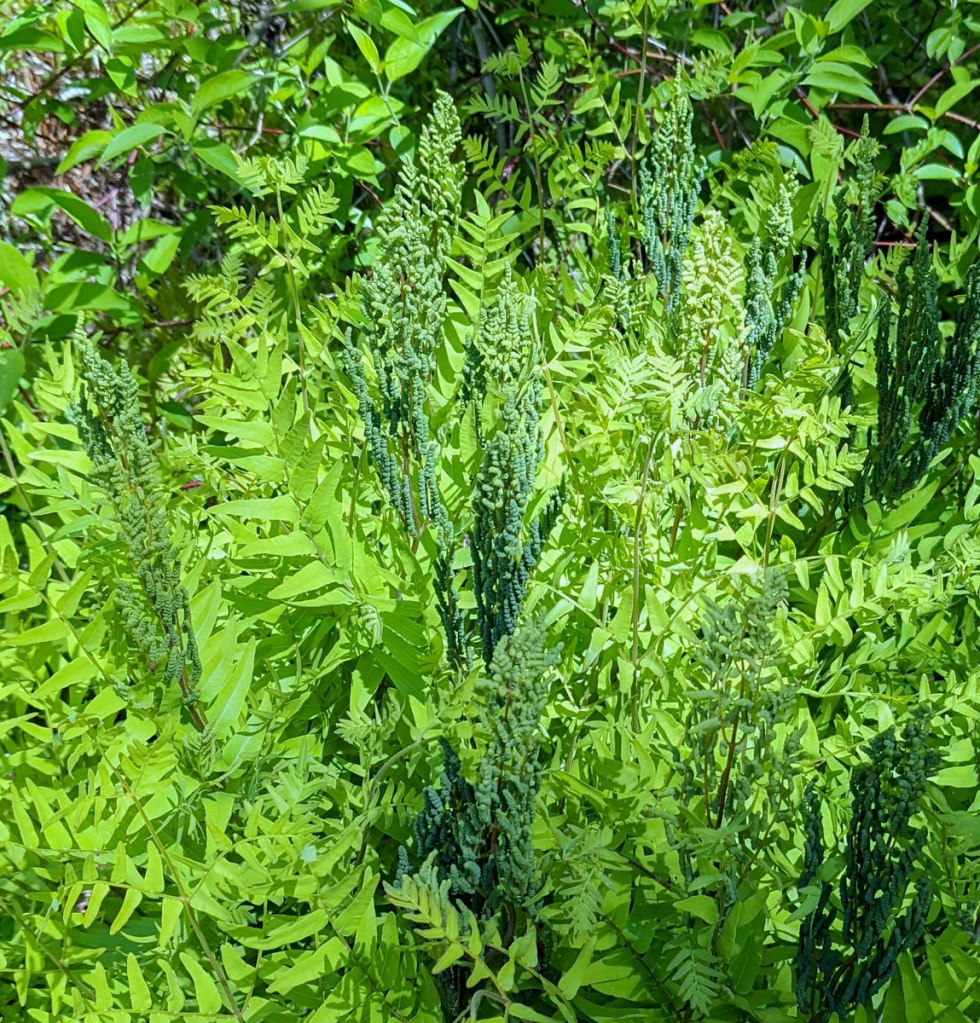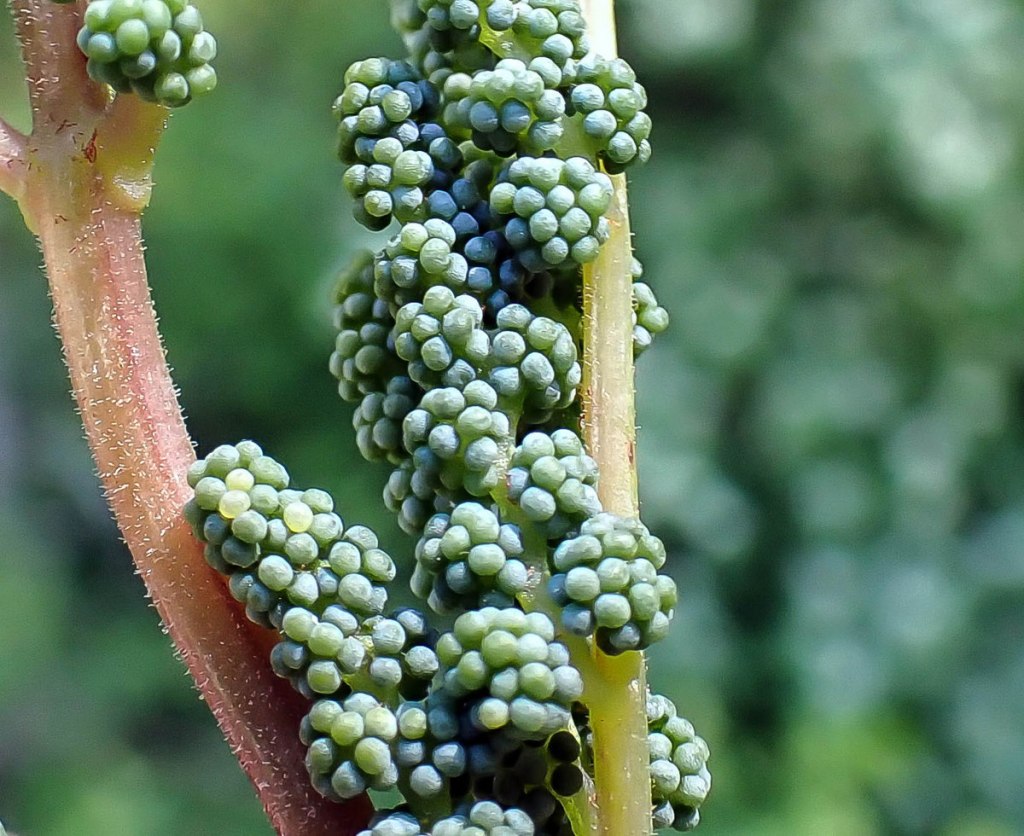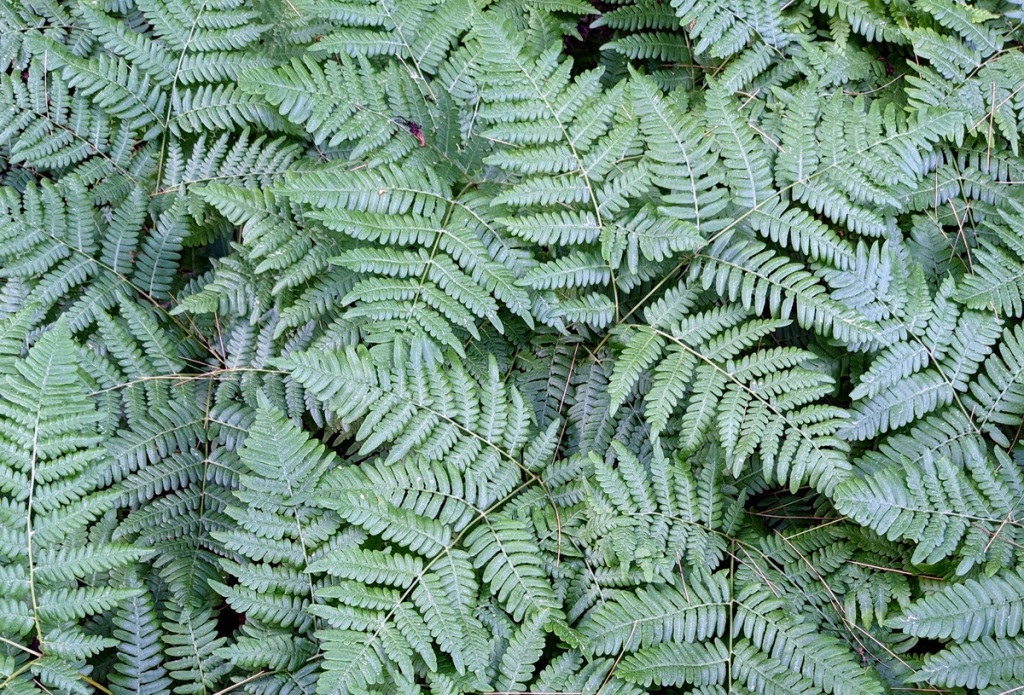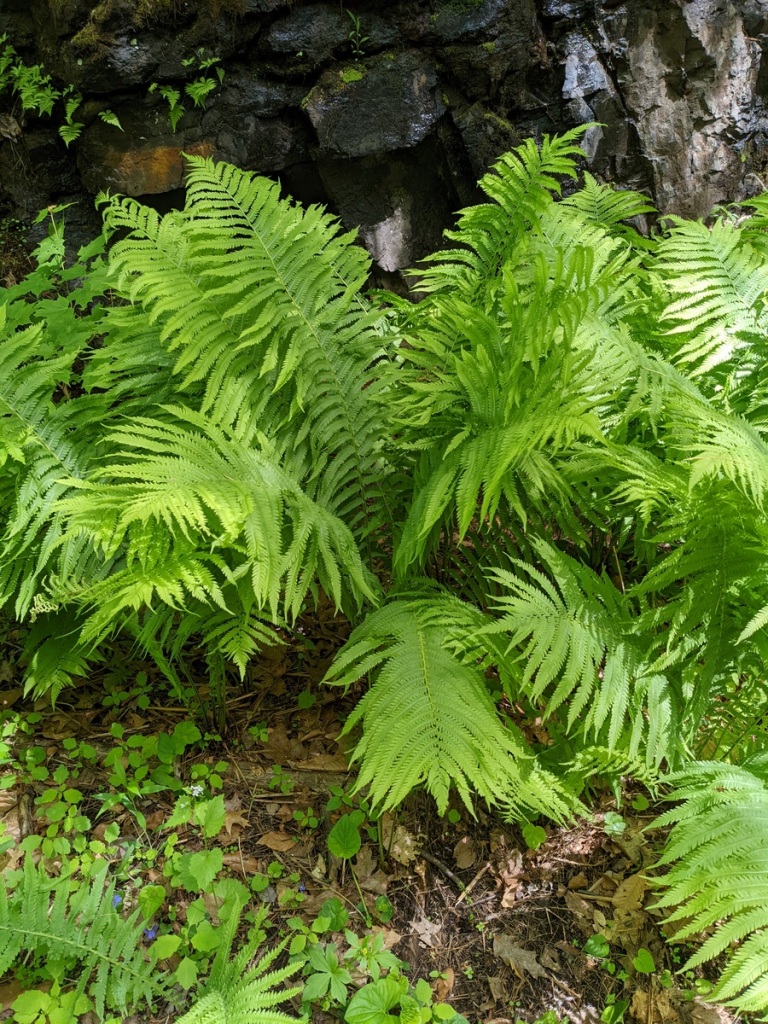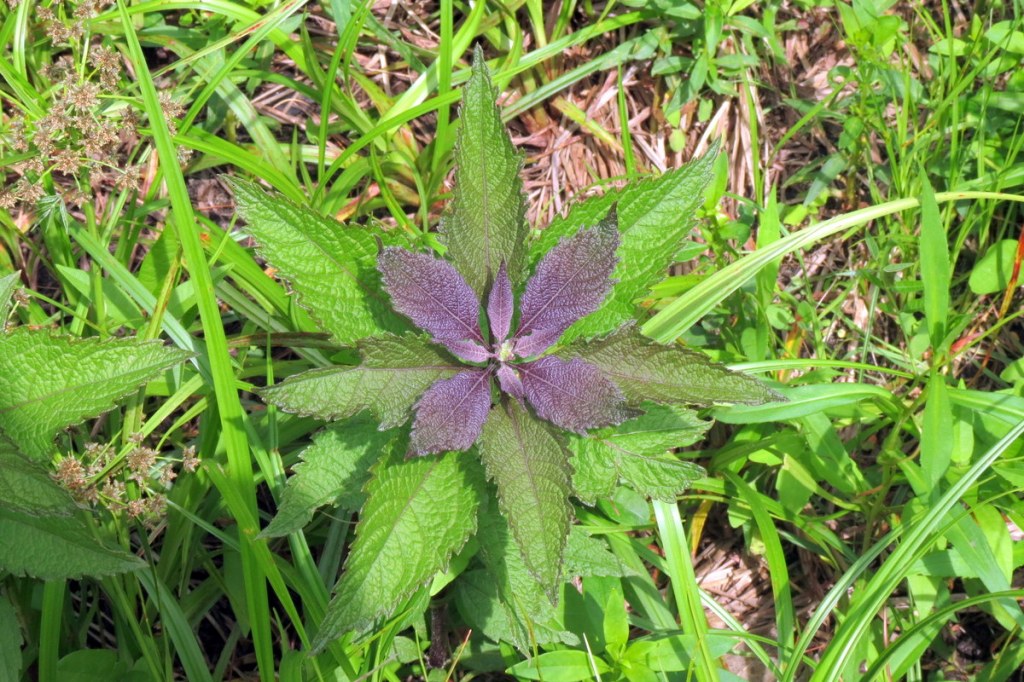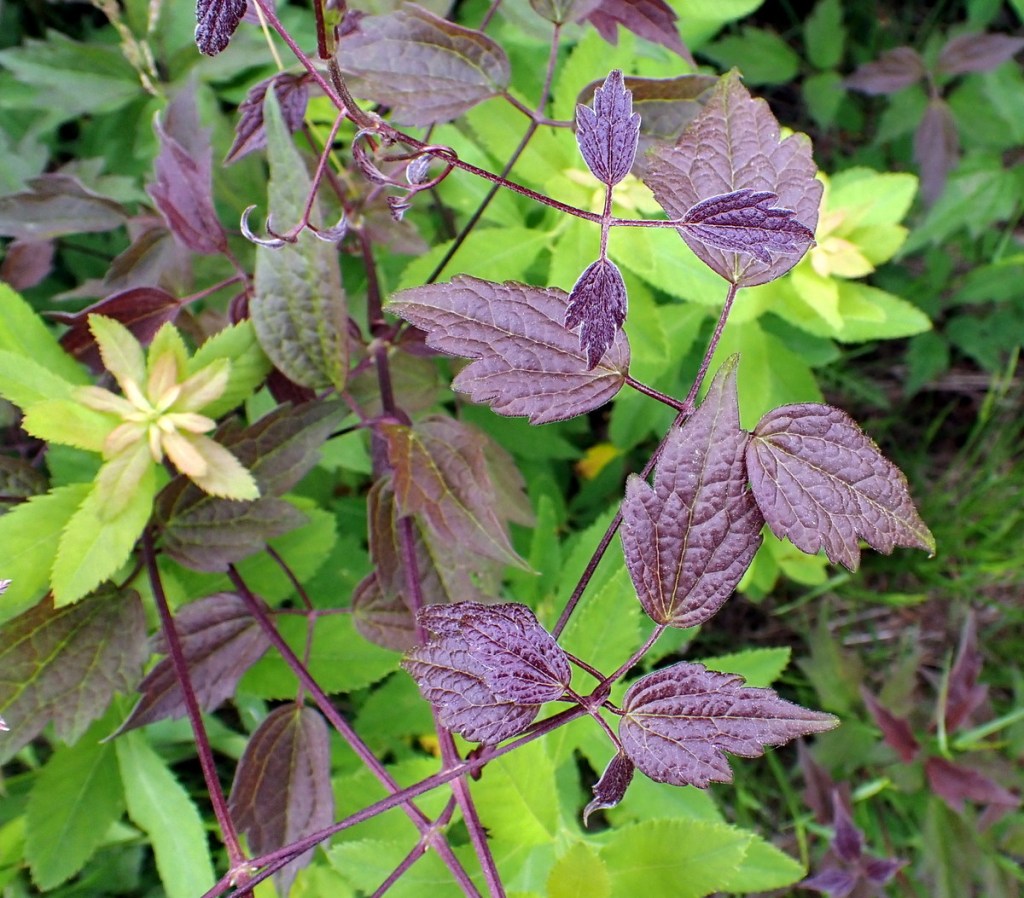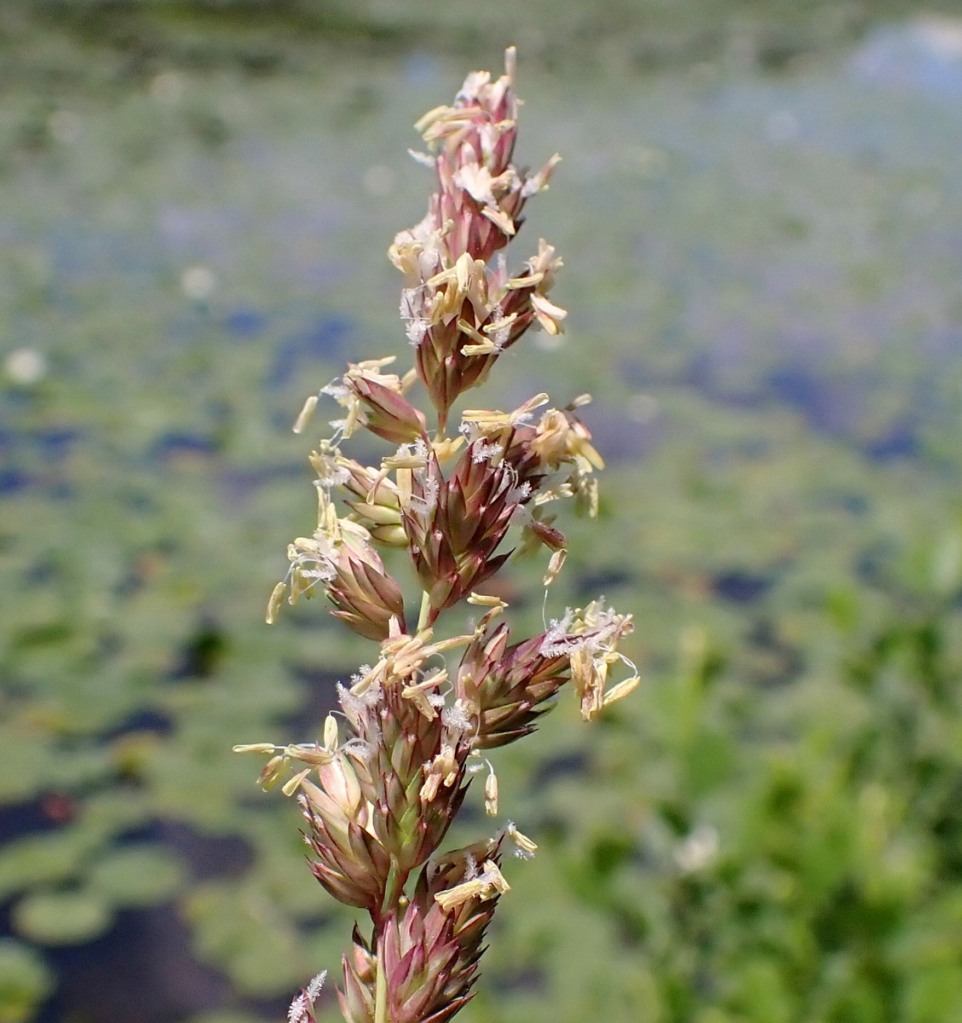
It’s time to get out of the woods and into the fields because that’s where all the sun lovers like these lupines are found. These particular plants grow alongside the road so I’m fairly sure they must have been planted by the state to help stabilize the embankment they grow on. Lupines seem to be even more beautiful when grown in large groups, and that’s probably because that’s the way they grow naturally.
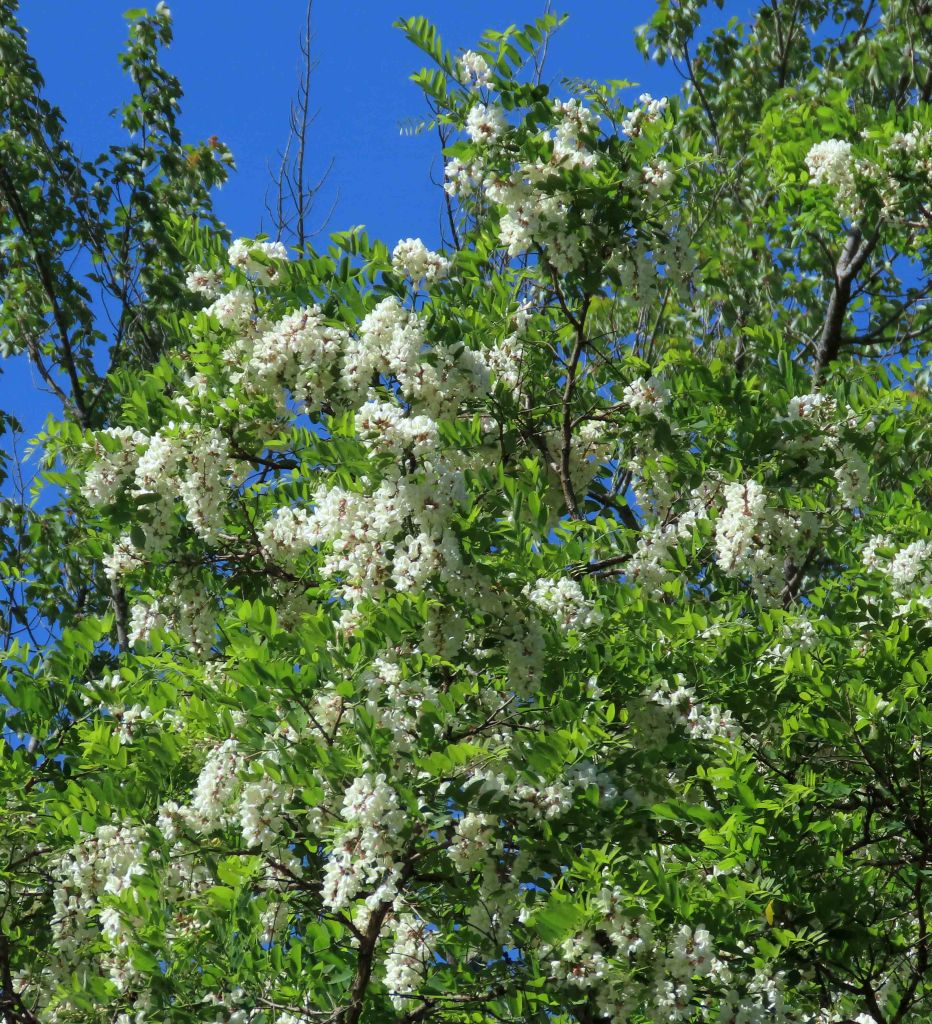
Don’t forget to look up; there are some beautiful things going on up there. This is one of many black locust trees in the area that are blossoming right now.

Like the wisteria blossoms I showed in the last post black locust flowers hang in pendulous clusters and are very fragrant. Black locust wood is very hard and prized for use as fence posts, among other things. It is said that a fence made of black locust posts can last a hundred years.

In this shot I tried to get the bristles that give bristly locust its name, as well as the flowers. Bristly locust is more shrub than tree. Though it is said they can reach 8 feet the ones I know barely reach 6. Bristly purple-brown hairs cover its stems, the backs of its flowers and even its seedpods but they aren’t stiff or particularly prickly. The plant is native to the southeastern United States but has spread to nearly all of the lower 48 states. The beautiful pinkish purple flowers are very fragrant and bees love them. Certain nurseries sell them, so if you’re looking for a beautiful “plant it and forget it” native small tree that would do well on the edge of the woods and which pollinators would love, you might try one.
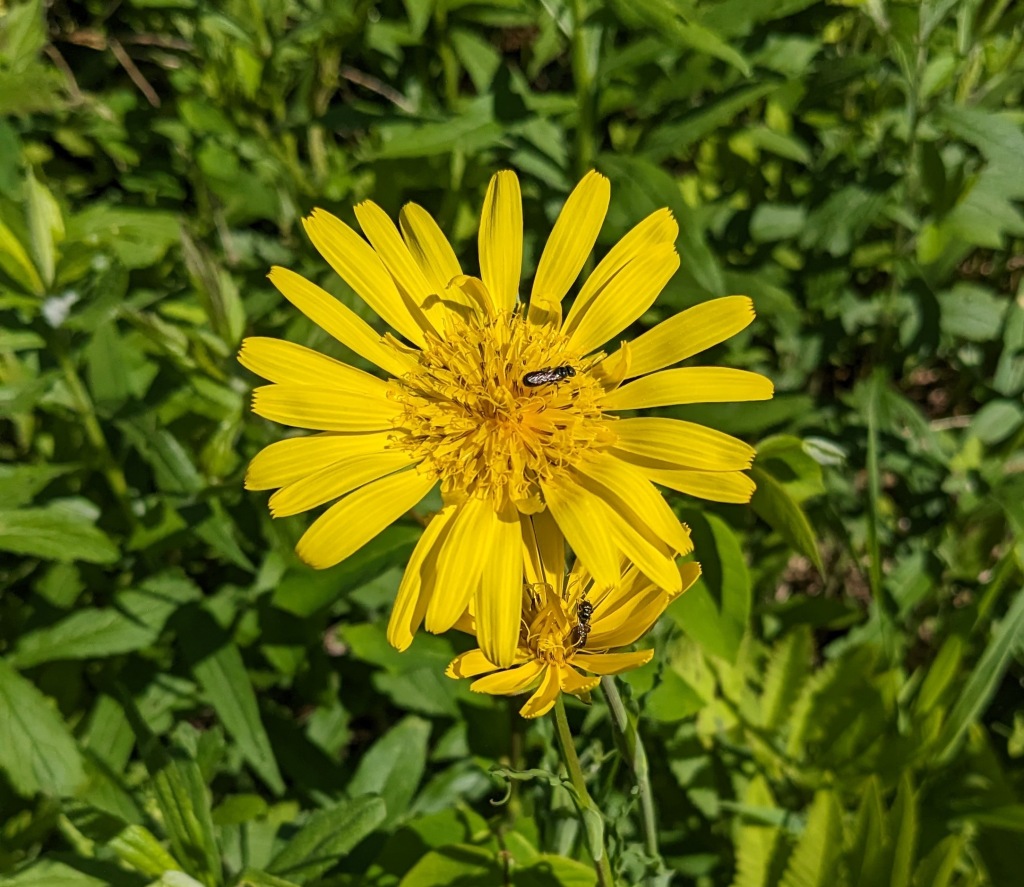
I don’t know who thought up the name “Jack go to bed at noon” for yellow goat’s beard but it’s accurate. They open when the sun finds them in the morning and then close up in early afternoon. These plants are from Europe but they could hardly be called invasive. I know of one colony off in a sunny meadow that really hasn’t expanded much in ten years. I’ve read that a kind of bubble gum can be made from the plant’s milky latex sap and its spring buds are said to be good in salads but I haven’t tried either.

I went to a local pond to see if the fragrant white waterlilies were blooming, and found maybe 30 of what will eventually be hundreds of them blooming. When you’re there and the breeze blows just right you can smell their wonderful fruity scent that some say smells like cantaloupe.

While I walked around the pond looking for a good place to get a shot of a waterlily blossom I got a big surprise; one of the biggest snapping turtles I’ve seen. That white clover blossom is about 1/2 to 3/4 of an inch across, if that tells you anything.
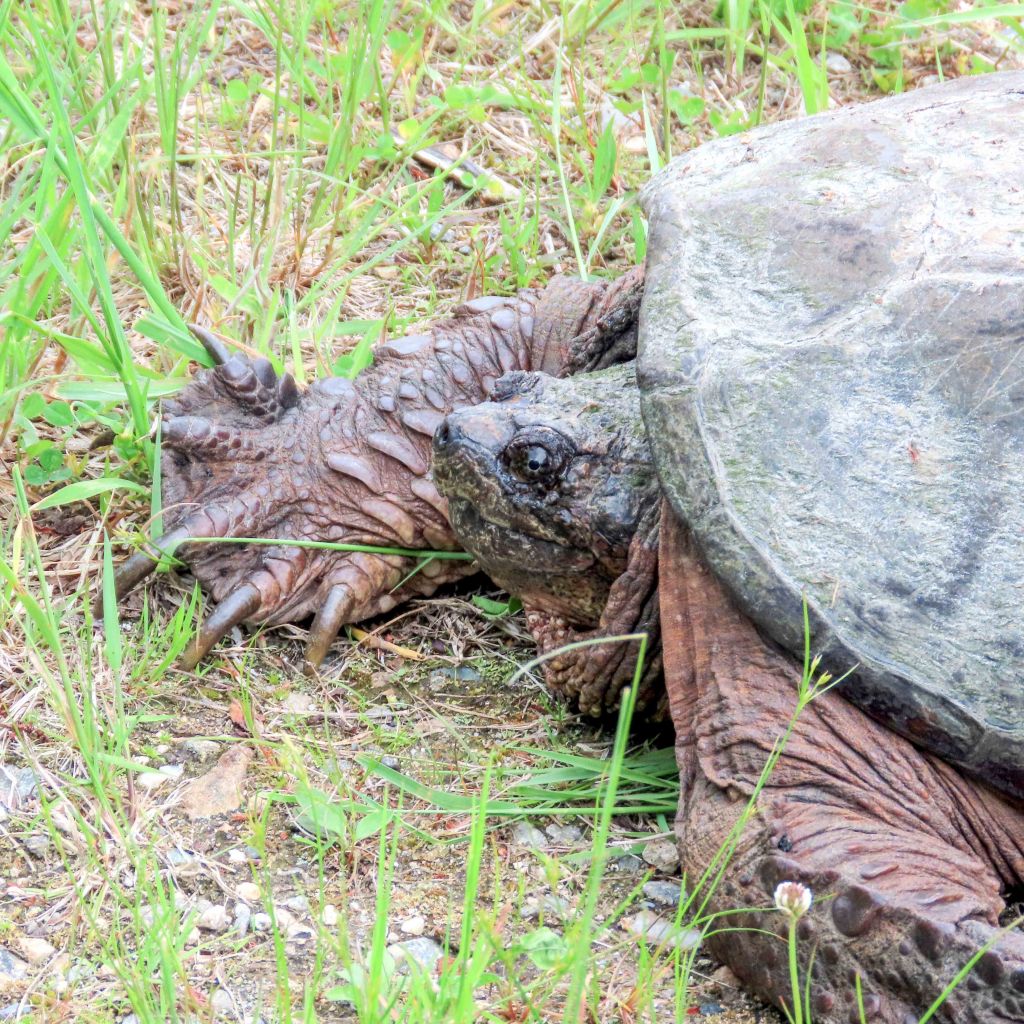
At first I thought this big turtle had died of exhaustion but then I saw one of its back feet twitch and I knew it was alive. It’s best not to get too close to these creatures because what looks like a short neck is actually quite long and if one of your fingers gets caught in that beak well, you have a problem. This is the first shot I’ve ever gotten of a snapper’s big foot and claws. For a minute I felt as if I had been transported back in time a few million years.
These are gentle creatures that come on land only to lay their eggs, and they should be left alone to do so. I always just snap a couple of quick photos and leave them in peace. This one stayed in my mind though, so I went back to check on her the next day and was happy to not find her there in the hot sun. Though they glide through the water like a bird in the air on land they lose their buoyancy and feel their weight, and sometimes it seems as if they are struggling just to move. Egg laying also seem to take a lot out of them.
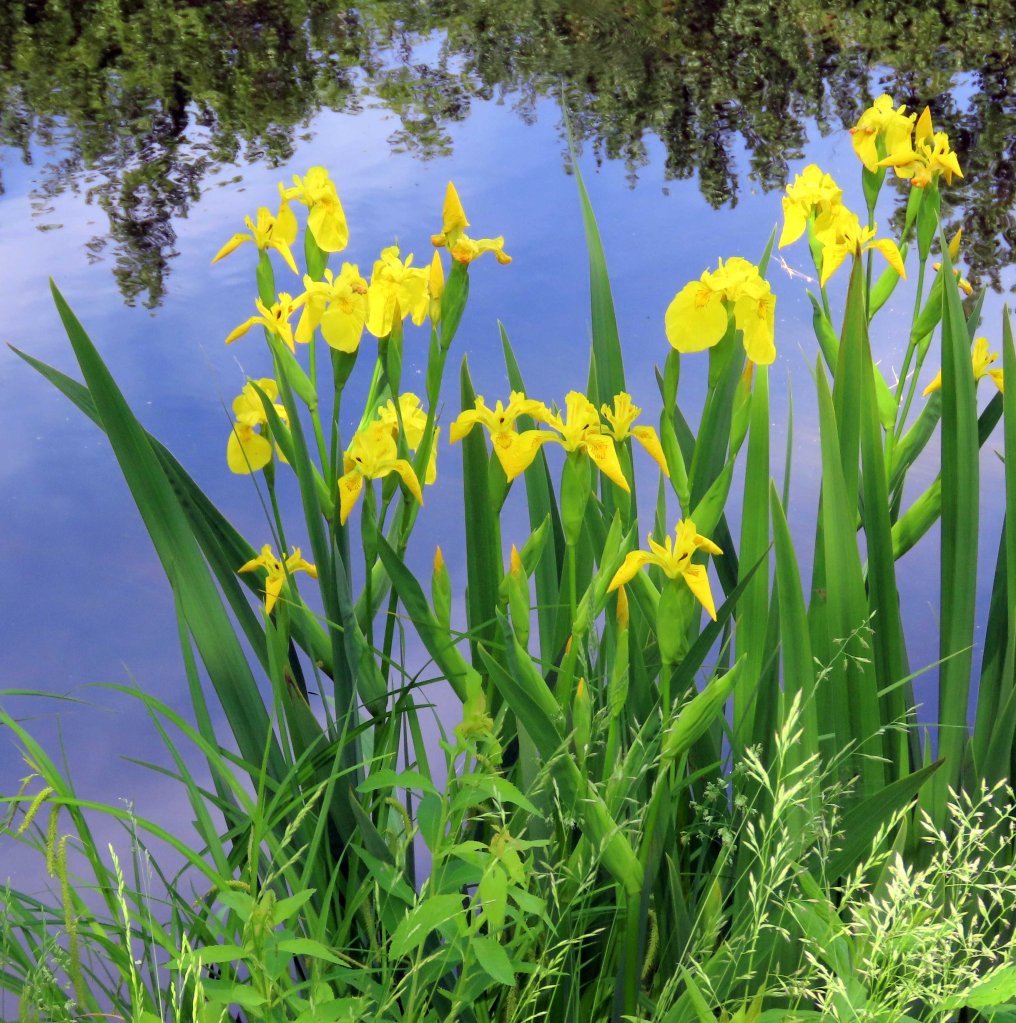
This is an invasive iris from Europe that is quite aggressive, and it grows wild in two or three spots along the river in Keene. It’s a beautiful thing but it spreads quickly so I can imagine the banks of the river lined with them in the not too distant future.

The dark markings on the petals are a good sign that this is “the” iris. I can’t think of a native iris that is yellow, grows in water, and is this big. They stand a good three feet tall and are very showy.
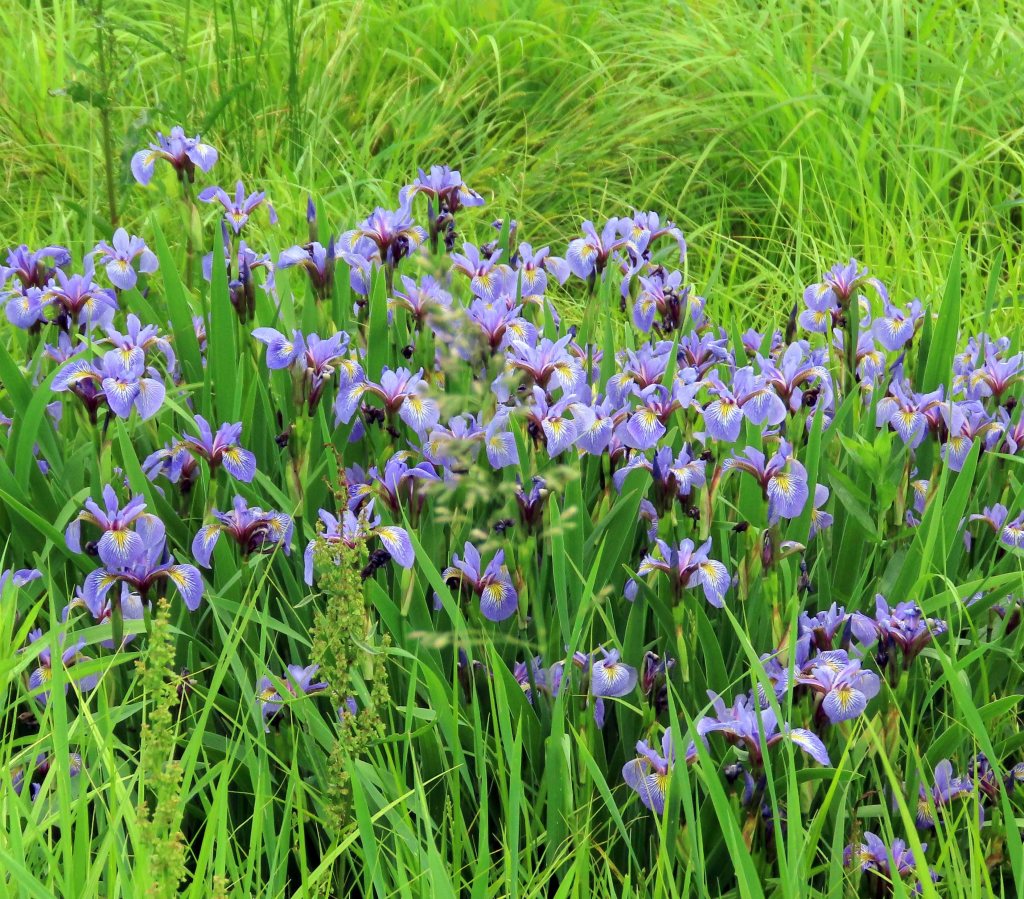
Our native wild irises are blue flags, which have shorter stalks and smaller flowers.
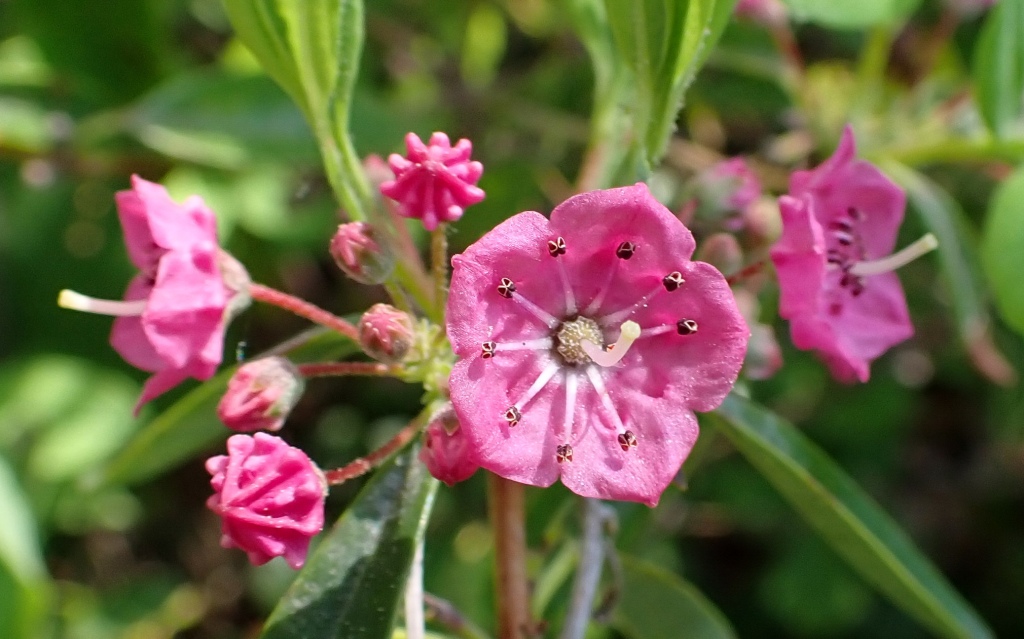
Sheep laurel are closely related to mountain laurel but they bloom a bit earlier. The flowers are smaller than mountain laurel and pink rather than white but as can be seen here, they have the same ten pockets that the tips of the anthers fit into. This makes them spring loaded, so when a heavy enough insect lands on them they all spring out and dust it with pollen. It seems like a lot of trouble for a flower to go through but it obviously works; there are always more laurel plants coming along.

Dragonflies are finally appearing and some like the chalk fronted corporal can hatch in the hundreds in just a small pond. This is a fairly common dragonfly that is good to practice your dragonfly photography on, because it likes to perch and wait for prey to come along. This one kept flying off this log and returning to the same spot and it didn’t mind me watching. They have pretty wing patterns and the chalky white coloring on their bodies can seem blue in certain light.

Chalk fronted corporals get their name from the “Corporal bars” behind their head. They’re not afraid to fight and won’t put up with interlopers trying to take over their spot. If you don’t like being bitten by mosquitoes then you should cheer the arrival of these and other dragonflies because they eat mosquitoes by the bag full. In fact if you’re very fortunate a swarm of chalk fronted corporals may follow you as you walk along, eating all the mosquitoes and deer flies that are swarming around you. If you’ve ever wondered why dragonflies will sometimes hover in front of you and seem to stare this is why; you attract their lunch.

Have you ever thought about what someone means when they say a plant is just an old weed? To me it means that they aren’t seeing the truth, because all things have their own beauty. They are spending more time sorting than seeing, and chances are they miss the beauty of things like blue toadflax, seen above. Just stop and look, and then really see.

Maiden pinks have started blooming. Though described as invasive everyone I know enjoys seeing them, so they aren’t any trouble. They like dry, hot, sandy soil in waste places where nothing else will grow anyway, so I say let them brighten the bare spots. They were once called “flashing lights” and it’s a good name for them.

This blue damselfly landed on a leaf right in front of me. “Thank you,” I thought as I took its photo. This is what I mean when I say that sometimes it can seem as if nature is throwing itself at you, and it’s a wonderful thing. Anyhow, this little damselfly might be a female eastern fork tail. And it might not; that’s the best I can come up with after a quick online comparison. I’m done spending hours, days, weeks and sometimes even months trying to put a name to something, because in the end the name is meaningless to me. It’s just a pretty blue damselfly.
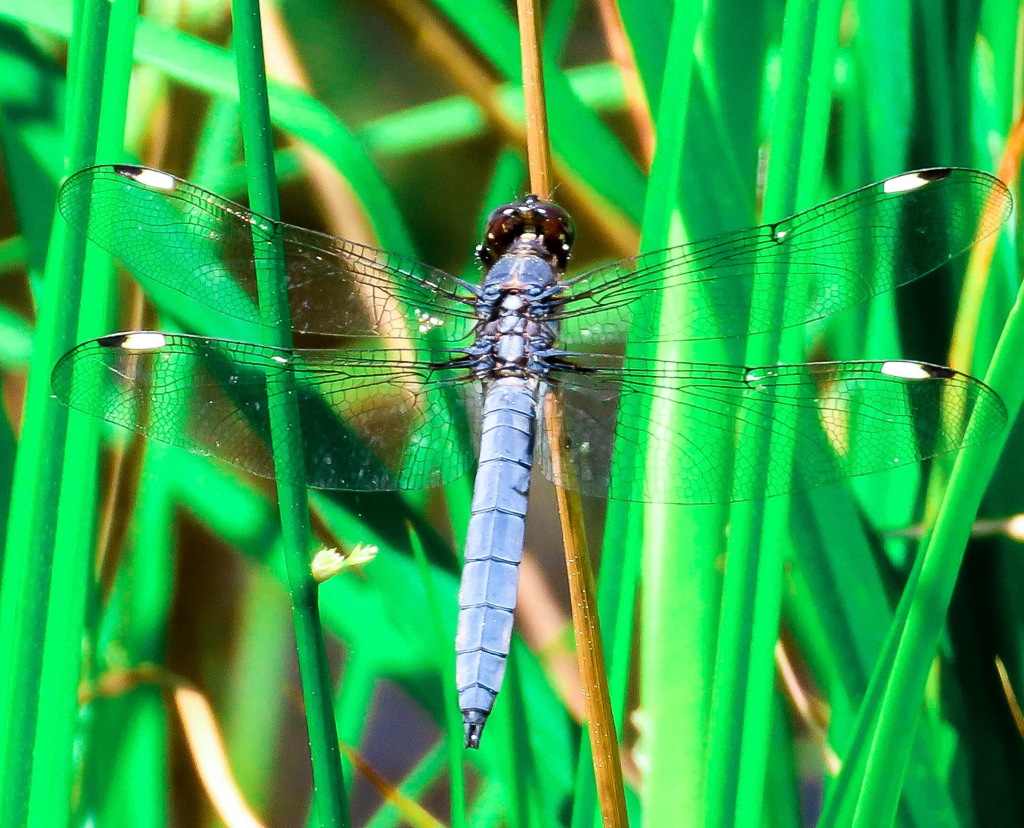
Of course some names that are learned with effort aren’t easily forgotten, and that was the case with this spangled skimmer dragonfly. The “spangles” are the black and white bits at the leading edge of its wings; black is on the outside and white on the inside. These spangles shine in sunlight, which makes this dragonfly very easy to spot.

The pollen cones have opened on the red pines, white pines, and umbrella pines. These are the opened male pollen cones of the red pine seen here. If you have hay fever right now is not a good time, because the air is filled with pollen. One day I looked through a haze at the far hills that was so thick I thought it was smoke from more Canadian wildfires. I checked the air quality on my phone and it was good for this area, so it must have been pollen. That’s how I discovered that pollen doesn’t bother my lungs in the same way that smoke from fires does. It does make me sneeze though.
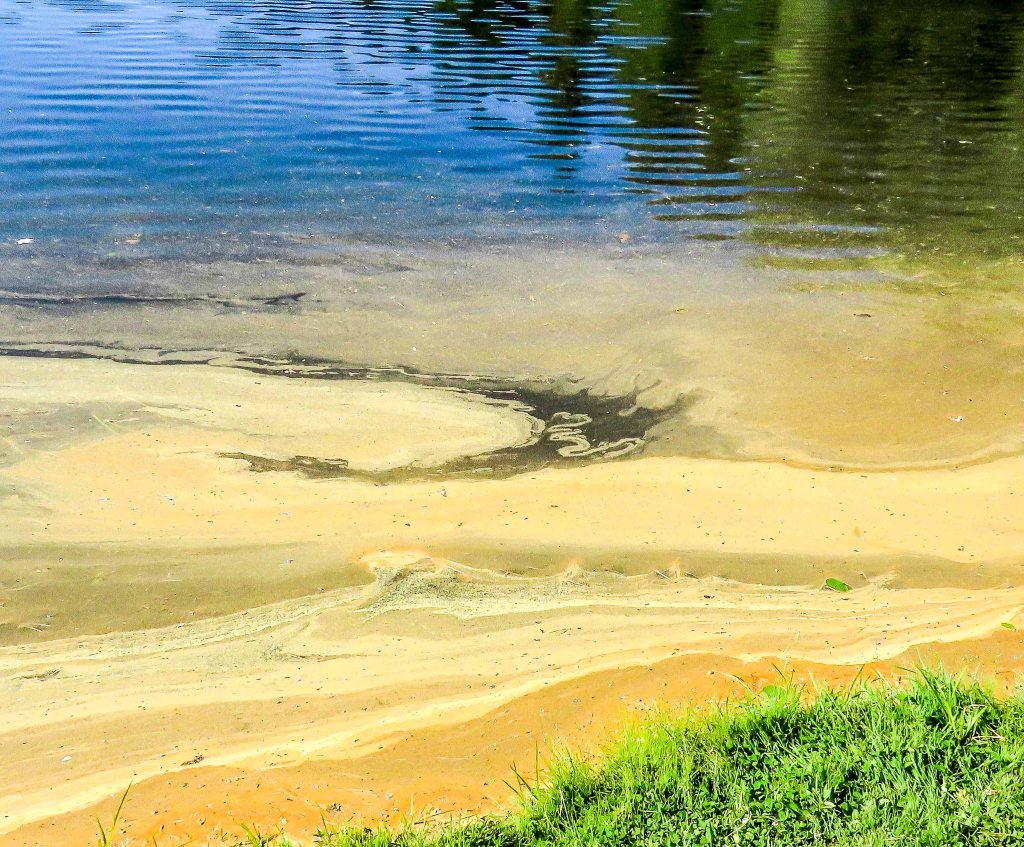
Where does all that pollen go? Everywhere, actually. It gets all over cars and inside the houses of people foolish enough to leave their windows open. When it rains it is washed into waterways, which is what the above photo shows. It floats on water and gathers in the shallows, so thick that great blue herons can’t see fish and frogs through it. Once we have a good heavy shower of rain it all disappears, presumably to the bottom of the pond or lake.

Not all the pollen is wasted though; some will reach the places it is needed, like these tiny pink flowers of the red pine. These flowers will become the tree’s pinecones, which will carry the trees seeds. That pollen, nuisance that it can be, means the continuation of life.

I went and saw the river of Dame’s rocket, which was always beautiful. I say “was” because I went back a week later and found that all of the plants in this photo had been dug up. The plants are not native and are very invasive, so I can understand why but still, I’ll miss them.

At a glance Dame’s rocket can fool you into thinking it is garden phlox, but phlox flowers have five petals and Dame’s rocket flowers only have four. It’s quite beautiful and fragrant but if you have it in your yard you’d better keep an eye on it, because it can spread quickly.

The alliums are blooming, from large ornamental flowerheads…

…down to small edible flowerheads like chives. Both are in the onion family and are quite pretty.

I thought I’d sneak in one plant that doesn’t like wall to wall sunshine; the blue bead lily. The leaves of this plant look like lady’s slipper leaves without the pleats and the flowers look like miniature Canada lilies. Blossoms have three petals, three sepals, and six stamens, as do all members of the lily family. Later on in July or August the electric blue berries that give this plant its name will appear. They’re beautiful and unusual, and worth keeping an eye out for.

This dragonfly is I believe, a lancet club tail. I saw it perched on a rock studying what looked like plans for a house or garage. Now wait just a minute, I thought, dragonflies are smart but they aren’t that smart. In fact what it was studying were just plant parts that had randomly fallen in a pattern that looked like a house and I’d bet that it wasn’t studying them at all, but it makes an interesting photo. When you get to know them dragonflies can keep you guessing because they are indeed more intelligent than we have been taught insects should be.

I like this one’s eyes, and I hope you do as well. I’d love to be able to see through those eyes, just once.
Summer is the annual permission slip to be lazy. To do nothing and have it count for something. To lie in the grass and count the stars. To sit on a branch and study the clouds. ~Regina Brett
Thanks for coming by.
